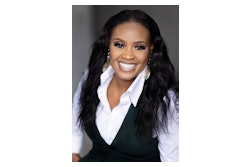
Going to a high school that provides strong academic preparation and support comes with intrinsic advantages. Rigorous coursework is one of the most important factors colleges consider in the application process. Even truer at colleges that are competitive to get into, not enough Advanced Placement or Honors courses can leave admissions officers wondering whether the applicant is a slacker or unable to keep apace with college-level work. But Black and Latino are less likely than their peers to attend a high school that offers rigorous coursework, where some high schools even lack Algebra II, a basic admission requirement of many colleges.
More so, even if the high school does provide college-level coursework, Black and Latino students are less likely than their other peers to be found on their rosters.
Are many Black and Latino students enjoying the benefits of the high schools that are perched atop the US News and World Report rankings? To find out how diverse the top 20 high schools in the country are and the extent to which Black and Latino students have access to AP courses, I combined USNWR’s list with the U.S. Department of Education’s (ED) Office of Civil Rights (OCR) data. Among other things, OCR collects data on the racial composition of AP courses for every high school (their most recent data is from 2011).
I also added the racial composition of the zip code in which the high school is located from the 2010 US Census. This was only for context, since magnet high schools can draw from much larger areas and would therefore not be very representative of the immediate area. Furthermore, Census figures show the racial composition of all people in an area, not just the high school-aged ones.
Most of the top 20 high schools in the country are not very diverse. In total, Black students are only 8 percent of all students at these 20 high schools; Latinos, 12 percent. In fact, 12 of the top 20 high schools in the country had less than 5% Black enrollment, while half had Latino enrollments below 5%. There were some notable exceptions: three high schools had Latino student enrollments that exceeded 50%.
Figure 1. The top 20 USNWR high schools by representation of Black and Latino students

Sources: US News and World Report Best High Schools Rankings, 2014; Civil Rights Data Collection, 2011 Survey
Many of these high schools lack racial/ethnic diversity because they are in areas that lack Black and Latino families. For example, High Technology High School in New Jersey is situated in a neighborhood that is only 0.5% Black and 3.5% Latino. The high school mirrors this dearth of diversity with just 2% Black and Latino students combined. On the other hand, there are instances where there’s a huge gap between the school population and nearby residents. Take Stanton College Preparatory School in Jacksonville, Florida. Nearly all of the residents in the surrounding area are Black, but only about a quarter of the high school’s student population mirror that. Stanton, a magnet school, no doubt draws from many surrounding communities to fill its seats.
Let’s unpack this further. Below is a graph of the average high school demographic representation by magnet school status (the first column). The second column is the racial/ethnic composition of the neighborhood in which the high school is located. Of the top 20 high schools, magnet high schools (count = 11 ) are more diverse than non-magnet high schools (count = 9), but they are also typically found in very diverse neighborhoods. What does this mean? That many Black and Latino families have amazing—but inaccessible—high schools in their backyards.
Figure 2. Comparison of average representation of Black, Latino and White students at the top 20 high schools with neighborhood racial/ethnic composition by magnet school status.

Sources: US News and World Report Best High Schools Rankings, 2014; Civil Rights Data Collection, 2011 Survey
In some high schools, Black and Latino students are less likely to enroll or in AP courses. Even in high schools that might offer advanced courses, Black and Latino students are also less likely than White or Asian students to benefit from them. To find out if the same goes for these top-rated high schools, I first removed 13 schools with very low enrollments of Black (fewer than 40 students) and 9 with low Latino student enrollments. Then, at the remaining schools, I looked at Black and Latino participation rates in AP relative to White students. If you recall, AP and IB participation is one of the reasons why these high schools top the list. But within those schools, are students from all backgrounds benefitting from the access to rigorous academic coursework? In other words, how many students in these groups are enrolled in AP classes, and how many then go on to take the tests (which, if they do well, can often count as college credit)? Among the remaining schools, there was an average enrollment gap of 4 percentage points between Blacks and Whites, and 1 percentage point between Latinos and Whites (this smaller gap might be driven by Latino participation in the Spanish Language exam). Four of the schools had Black-White or Latino-White gaps that exceeded 5 percentage points; they are listed below. For example, at the Academy of Aerospace and Engineering, only 8% of Blacks and 3% of Hispanics are taking AP courses, while 15% of White students do so. Seven high schools had participation gaps larger than 5 percentage points (listed below). At BASIS Tucson North, over two-thirds of White students took all corresponding AP exams for their AP courses, whereas only two out of every five Black students did the same. At high schools like these, equitable access stops short of the culminating AP exam.
Table 1. Top USNWR high schools with racial/ethnic disparities in Advanced Placement enrollment and examination rates.
| Enrolled in AP | |||
| Name | Black | Latino | White |
| Academy of Aerospace and Engineering | 8% | 3% | 15% |
| Gwinnett School of Mathematics, Science and Technology | 47% | 51% | 66% |
| Loveless Academic Magnet Program High School | 65% | — | 72% |
| Thomas Jefferson High School for Science and Technology | — | 55% | 69% |
| Tested for all AP exams | |||
| Academy of Aerospace and Engineering | 29% | 100% | 84% |
| BASIS Tucson North | 40% | 55% | 68% |
| Design & Architecture Senior High | — | 86% | 95% |
| Loveless Academic Magnet Program High School | 35% | — | 46% |
| Oxford Academy | — | 84% | 100% |
| School for the Talented and Gifted | 63% | 64% | 76% |
| Thomas Jefferson High School for Science and Technology | — | 86% | 99% |
| Sources: US News and World Report Best High Schools Rankings, 2014; Civil Rights Data Collection, 2011 Survey | |||
This quick exercise is just a snapshot of a bigger problem. Access to good—even baseline—academic preparation in this country remains elusive for many Black and Latino children. For example, the U.S. Department of Education’s Office of Civil Rights put Alabama’s Lee County School District on notice this past fall because the predominantly Black middle school did not offer Algebra, whereas the White middle school in the same district did. This disparity in access isn’t an isolated incident. The list goes on.
There is a reason why the Office of Civil Rights is collecting, analyzing, and policing these disparities in academic preparation. The results of resegregation, gerrymandering of public school attendance zones, and curricular tracking are preserving hierarchies and perpetuating inequalities that have deleterious effects for the academic outcomes of our Black and Latino students.
Academic resources provided by top high schools (like the ones that USNWR highlights) are great insofar as students are able to partake of them. Indeed, these resources are inextricably linked to gaining access to college. In the absence of colleges not being able to formally recognize some of these inequalities, now more than ever before, we need equitable access to rigorous academic preparation for Black and Latino students. Regardless of whether Black and Latino students attend a top high school, equitable access to academic preparation is their civil right.
Table 2. Top 20 high schools from USNWR Rankings
| Enrollment 2011 | 2010 Census | AP Enrollment 2011 | AP Exam-taking 2011 | ||||||||||||
| Rank | Name | Magnet | N | Black | Latino | White | Black | Latino | White | Black | Latino | White | Black | Latino | White |
| 1 | School for the Talented and Gifted | Yes | 243 | 14.5 | 24.4 | 36.4 | 34.2 | 59.5 | 4.9 | 100.0 | 100.0 | 100.0 | 62.5 | 64.2 | 76.0 |
| 2 | BASIS Scottsdale | No | 702 | 1.9 | 2.3 | 53.6 | 1.4 | 5.2 | 86.6 | 30.8 | 43.8 | 51.3 | 50.0 | 57.1 | 26.9 |
| 3 | Gwinnett School of Mathematics, Science and Technology | No | 70.1 | 21.1 | 8.7 | 25.4 | 25.4 | 28.6 | 31.5 | 47.3 | 50.8 | 66.3 | 70.0 | 71.0 | 69.5 |
| 4 | Thomas Jefferson High School for Science and Technologya | Yes | 1850 | 1.7 | 2.2 | 39.1 | 24.2 | 25.3 | 33.2 | 71.0 | 55.0 | 68.5 | 100.0 | 86.4 | 99.4 |
| 5 | BASIS Tucson North | No | 671 | 4.2 | 20.3 | 52.0 | 4.7 | 25.6 | 62.1 | 35.7 | 29.4 | 24.4 | 40.0 | 55 | 68.2 |
| 6 | Pine View School | No | 2206 | 0.9 | 7.8 | 77.3 | 0.5 | 3.2 | 93.4 | 10.5 | 23.3 | 23.1 | 100.0 | 92.5 | 93.9 |
| 7 | University High School | No | 892 | 1.5 | 30 | 51.2 | 5.6 | 35.9 | 51.3 | 76.9 | 73.1 | 71.1 | 40.0 | 55.6 | 59.4 |
| 8 | School of Science and Engineering Magnet | Yes | 389 | 18.8 | 53.5 | 14.9 | 34.2 | 59.5 | 4.9 | 100 | 100 | 94.8 | 79.5 | 72.6 | 72.7 |
| 9 | International Academy | No | 644 | 3.0 | 3.0 | 52.8 | 7.2 | 2.0 | 81.6 | 0.0 | 0.0 | 0.0 | 0.0 | 0.0 | 0.0 |
| 10 | Oxford Academy | No | 1140 | 1.7 | 13.0 | 10.9 | 2.9 | 18.1 | 43.8 | 36.8 | 49.3 | 29.8 | 100.0 | 83.6 | 100.0 |
| 11 | Biotechnology High School | No | 313 | 1.3 | 2.2 | 67.4 | 6.1 | 15.0 | 71.4 | 0.0 | 0.0 | 0.9 | 0.0 | 0.0 | 100.0 |
| 12 | Stanton College Preparatory School | Yes | 1595 | 24.7 | 7.0 | 48.2 | 96.4 | 1.1 | 1.4 | 99.2 | 100.0 | 100.0 | 90.8 | 94.6 | 93.8 |
| 13 | International Community School | No | 383 | 0.5 | 2.6 | 59.0 | 1.3 | 4.9 | 79.0 | 100.0 | 20.0 | 32.3 | 100.0 | 0.0 | 87.7 |
| 14 | Maine School of Science & Mathematics | Yes | 115 | 1.7 | 1.7 | 81.7 | 6.0 | 3.5 | 87.1 | 100.0 | 100.0 | 64.9 | 100.0 | 100.0 | 100.0 |
| 15 | Academy of Aerospace and Engineering | Yes | 395 | 21.5 | 29.9 | 32.2 | 17.1 | 61.3 | 15.4 | 8.2 | 3.4 | 15.0 | 28.6 | 100.0 | 84.2 |
| 16 | Academic Magnet High School | Yes | 622 | 5.9 | 2.1 | 81.7 | 70.1 | 3.7 | 24.0 | 83.8 | 53.8 | 65.2 | 61.3 | 57.1 | 66.5 |
| 17 | International School | No | 562 | 1.2 | 1.8 | 57.8 | 2.3 | 6.8 | 61.2 | 28.6 | 40.0 | 39.1 | 100.0 | 100.0 | 95.3 |
| 18 | Loveless Academic Magnet Program High School | Yes | 451 | 30.2 | 3.5 | 42.8 | 83.2 | 3.1 | 12.5 | 64.7 | 62.5 | 72.0 | 35.2 | 20.0 | 46.0 |
| 19 | Design & Architecture Senior High | Yes | 481 | 14.6 | 55.1 | 25.2 | 22.8 | 48.1 | 24.8 | 52.9 | 47.9 | 50.4 | 91.9 | 85.8 | 95.1 |
| 20 | High Technology High School | No | 275 | 0.7 | 1.5 | 47.3 | 0.5 | 3.5 | 91.6 | 100.0 | 50.0 | 76.9 | 100.0 | 0.0 | 49.0 |
Notes: Figures were grayed out for high schools that had less than 40 Black or Latino students in their high school. (a) USNWR lists this high school as a non-magnet, but CRDC data and the school website list the school as a magnet.
Sources: US News and World Report Best High Schools Rankings, 2014; Civil Rights Data Collection, 2011 Survey
Awilda Rodriguez is a research fellow for the Center on Higher Education Reform at the American Enterprise Institute.


















